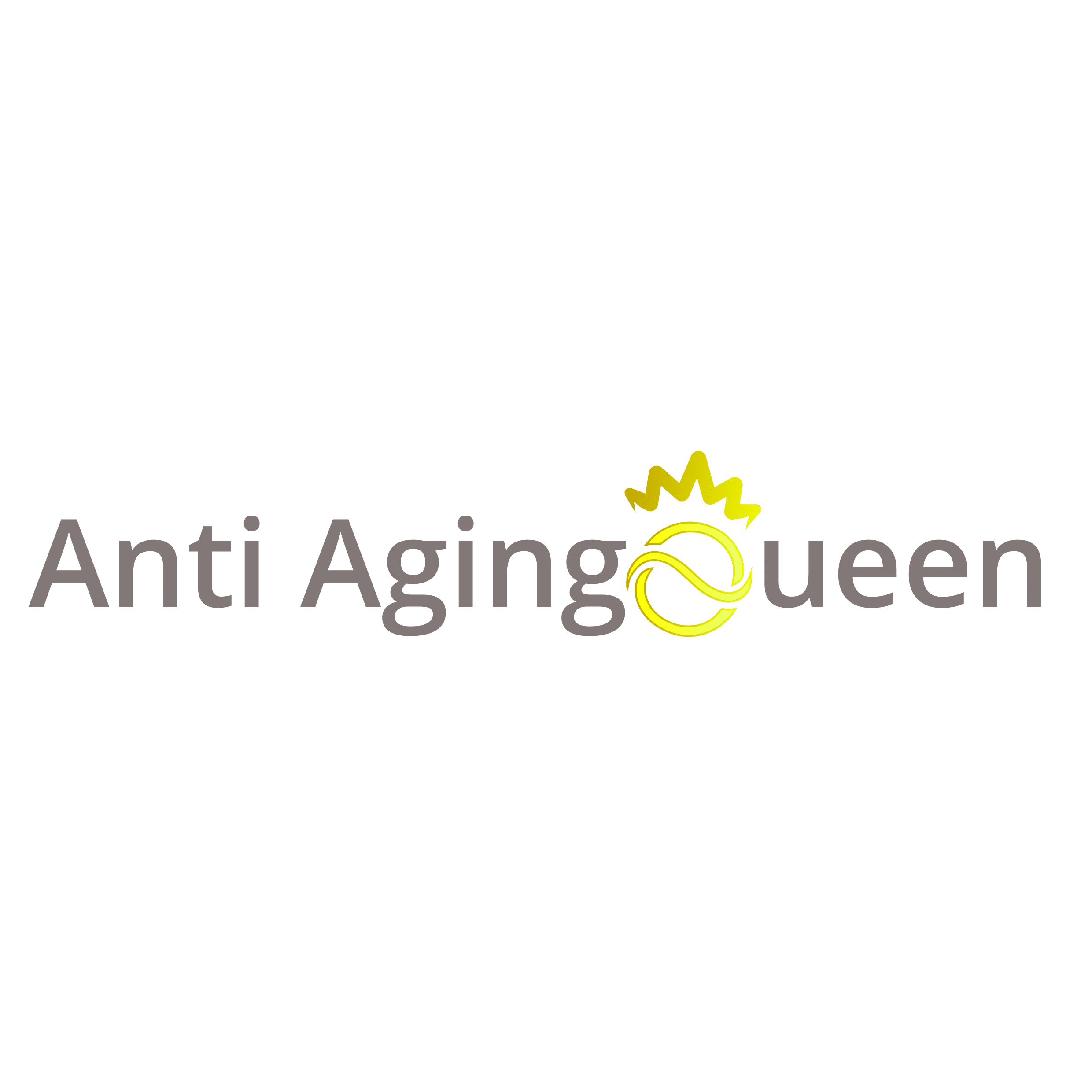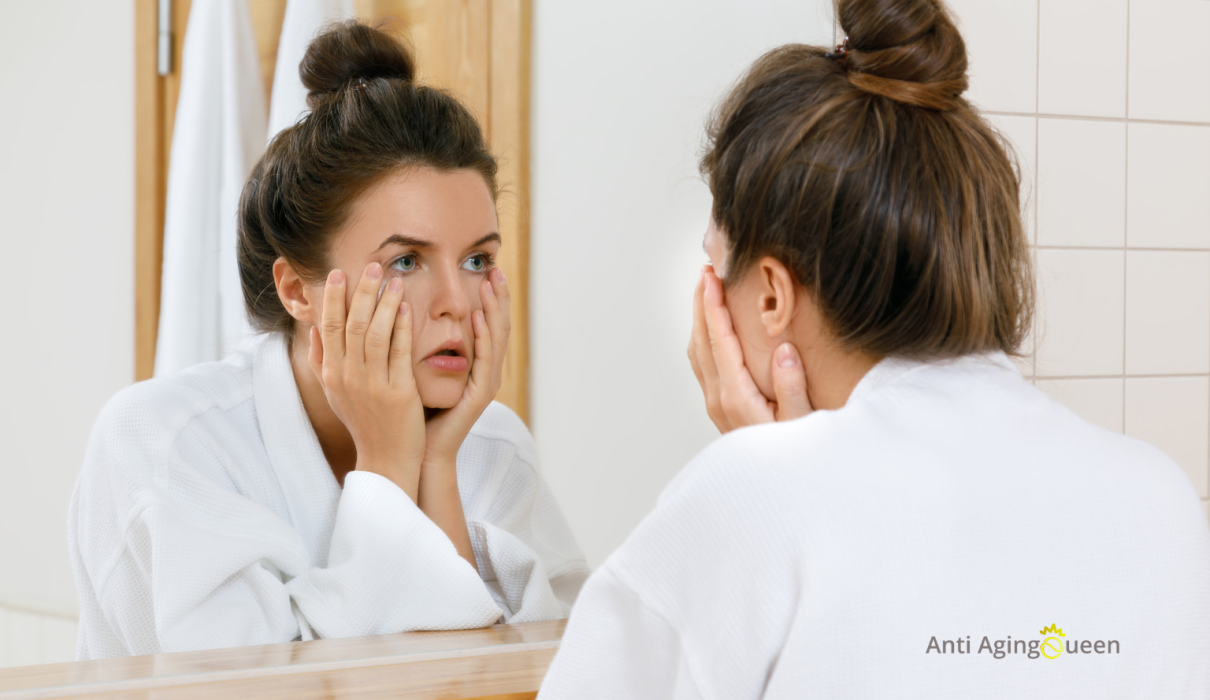If you’ve ever typed “my face looks old and tired what can I do” into Google, you’re not alone. I’ve been there, looking in the mirror and wondering when those lines appeared or why my skin is suddenly so dull. A study revealed that 65% of adults over the age of 35 are unhappy with how their faces look and one of the main complaints is that they look worn-out. I’ve spent years looking into what the beauty industry promises and interviewing dermatologists about what they won’t tell their paying clients.
Are you referring to the Nike slogan, “Just do it”? The $50 billion anti-aging industry preys on our insecurities. But many solutions are simpler and cheaper than you might think. Behind closed doors, even the most esteemed medical professionals acknowledge that simple lifestyle changes in many cases work better than costly medications. No gimmicks, no sales pitches—just real talk from one acne warrior to another.
When your face looks old and tired, what can you do? First, understand what’s actually happening under your skin. The beauty industry doesn’t want you to know this, but there are specific mechanisms behind looking tired that go beyond the generic concept of aging—and they’re not all inevitable.
Understanding Why Your Face Looks Old and Tired
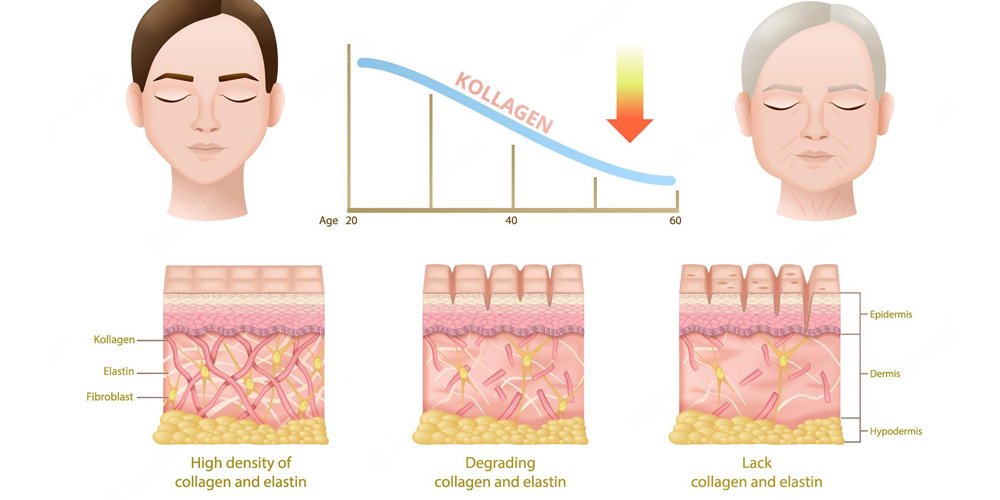
Intrinsic Aging: The Genetics You Can’t Escape
Your DNA is like a ticking clock for collagen loss. Around age 25, your body starts producing approximately 1% less collagen each year. By age 50, people lose approximately 30% of the collagen in their body, which accelerates the thinning and sagging effect. Your unique genetic code determines how quickly this happens. Some people remain plump and tight well into their 60s, while others show significant laxity by their 30s. But what’s less discussed is the role of micronutrients, notably zinc and selenium, in this process. Research is finding that the skin benefits of zinc and selenium for anti aging can influence the appearance of aging by supporting collagen production and cellular repair.
What industry insiders say: The “genetic lottery,” as it’s called, is not entirely set in stone. Studies indicate that although the body acquires up to 40% of the propensity for rapid aging genetically, other factors can either accelerate or slow this process by 60% as shown by dermatology research.
- UV Radiation: Accounts for 80-90% of visible aging signs. Fifteen minutes of unprotected sun exposure is enough to trigger collagen destruction processes in the skin, which continue for up to 24 hours see this scientific study on UV exposure. Interestingly, recent findings highlight how inadequate sun exposure can result in vitamin D deficiency, and there’s a hidden link between vitamin D and skin aging that often complicates the narrative around UV and aging.
- Pollution: Up to 22% more cases of hyperpigmentation and wrinkles are registered in genetically identical women who live in big cities compared to rural areas. The particles penetrate the skin and generate free radicals that destroy collagen fibers as detailed by pollution research.
- Smoking: Each cigarette constricts blood vessels for up to 90 minutes, depriving the skin of oxygen and nutrients. Regular smokers develop distinct wrinkle patterns around the mouth and eyes that can make them look 10+ years older than they are according to dermatological reviews.
The untold story? Extrinsic aging looks different than intrinsic aging. Intrinsic aging leads to fine wrinkling and changes in skin tone, while extrinsic aging causes coarse wrinkling, loss of skin elasticity and uneven pigmentation (characterized by a leathery texture) see clinical evidence here.
- Chronic Sleep Deprivation: Research from 2019 revealed that individuals who slept less than 6 hours for 5 consecutive nights experienced a 45% surge in fine lines, a 75% increase in brown spots and a 50% escalation in uneven skin tone.
- Stress Overload: Cortisol breaks down collagen and thins the skin, causing premature aging by up to three years. According to telomeres, how many years does obesity take from your life? as referenced in this aging and stress research.
- Dehydration: Studies show that losing just 2% of body water can reduce skin elasticity by up to 30% within hours. Surprisingly, emerging research explores how fermented foods influence skin health and hydration through gut benefits, indicating that lifestyle and dietary choices have broader effects on skin resilience.
- Sugar intake: The best-kept secret of the beauty industry is that sugar molecules bond with protein fibers in cells and harden them, which is called glycation. The role of sugar and refined carbs in fueling skin aging and deepening wrinkles has been meticulously examined regarding their impact on the formation of wrinkles.
Let’s call it what it is: the old, tired face staring back at you in the mirror is the sum of all these effects. The bigger issue is that people only treat the symptoms of physical and mental health problems.
Dietary Changes to Rejuvenate Your Skin
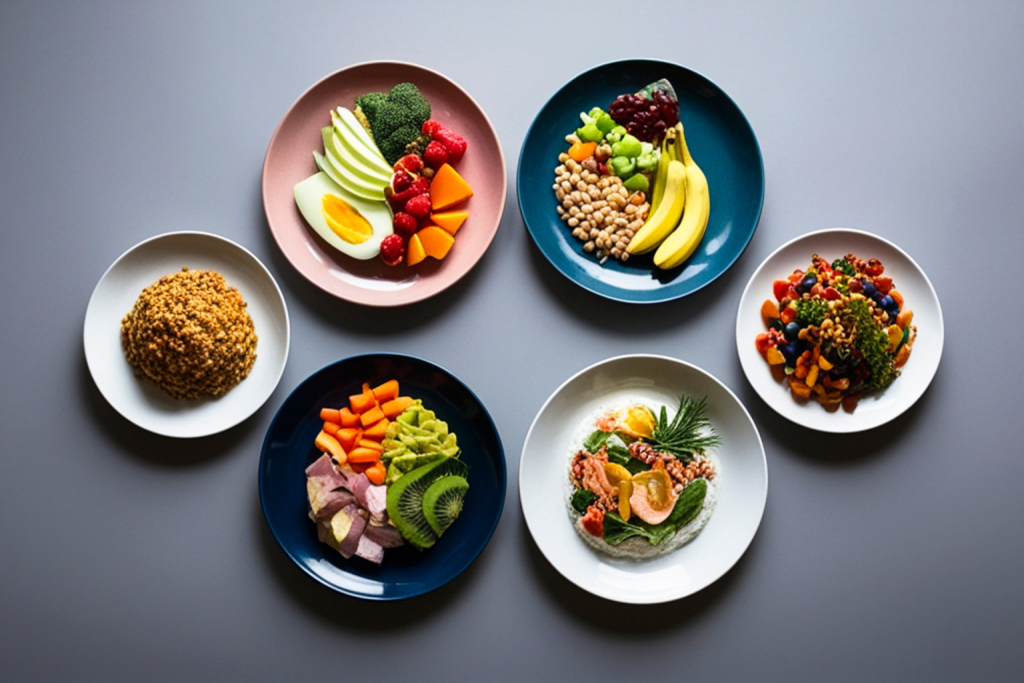
If your face looks old and tired, the most powerful thing you can do might be changing what is on your plate. The beauty industry doesn’t want you to know that the expensive topical collagen products don’t penetrate deep enough to do anything, but certain foods provide the materials your body uses to build skin. Still, a question persists: do foods that claim to produce collagen actually work for skin rejuvenation? Current science delves into the true mechanisms behind their efficacy and where expectations may diverge from results.
Your body makes collagen from amino acids, primarily glycine, proline and hydroxyproline. Without these, even the most expensive creams are useless. In fact, the precise relationship between how proline and glycine help with collagen production becomes especially relevant as we age and dietary intake naturally declines.
Sarah Gottfried, “is that no $300 cream can replace what a diet full of collagen precursors and antioxidants does for skin structure.” The skin is literally made out of food.
- Pomegranates: Studies show they inhibit the enzyme that breaks down collagen in skin after UV exposure.
- Green Tea: EGCG reactivates dying skin cells.
- Avocados: They provide glutathione, known as the body’s “master antioxidant,” which supports the recycling of vitamins C and E in skin cells.
- Tomatoes: Lycopene in tomatoes promotes better vascular functions in the skin and reduces UV damage risk by 33%.
The accountability gap in beauty marketing is also why you rarely hear about these foods today because there’s no money in it. However, another food group quietly generates growing scientific interest—mushrooms. Recent studies reveal that mushrooms possess anti aging power with documented skin health benefits, spanning from antioxidant support to barrier repair.
- Sugar and Refined Carbs: Cause glycation, leading to the formation of AGEs (Advanced Glycation End products) that damage collagen. For a more technical exploration, delve deeper into the mechanisms of sugar and carbs accelerating skin aging and wrinkle formation.
- Processed Meats: Loaded with sodium, preservatives and sulfites, which dehydrate the skin and trigger inflammation.
- Alcohol: Depletes vitamin A, which is essential for collagen production and causes dehydration and inflammation.
Meredith, 52: “After I cut down sugar and focused on collagen-boosting nutrition for six months, my co-workers began inquiring if I had undergone any cosmetic procedures.” My skin gained a firmness and glow that no product had ever delivered.
Hydration Strategies: Beyond Just Water
- Electrolyte Balance: Sodium, potassium and magnesium assist water to reach the skin cells rather than being flushed out.
- Hydrating Foods: Cucumber, watermelon and celery.
- Timing: It’s better to drink small amounts throughout the day than a lot at once.
Clinical measurements show that improving hydration can increase skin thickness by up to 7% in two weeks, which reduces fine lines. Intriguingly, the interplay of diet and hydration includes not just water and salts but the restorative effects of warm anti-aging drinks that promote glowing skin in fall—an often-overlooked seasonal strategy for revitalizing tired complexions.
| Meal | Main Foods | Collagen/Antioxidant Boost |
|---|---|---|
| Breakfast | Berries, citrus, oatmeal, walnuts | High (vitamin C, ellagic acid, omega-3s) |
| Lunch | Grilled salmon, leafy greens, avocado, tomatoes | High (collagen support, beta-carotene, lycopene) |
| Snack | Green tea, pomegranate seeds, almonds | Moderate (EGCG, vitamin E) |
| Dinner | Chicken, quinoa, broccoli, olive oil | Moderate (protein, antioxidants, healthy fats) |
Effective Skincare Routines
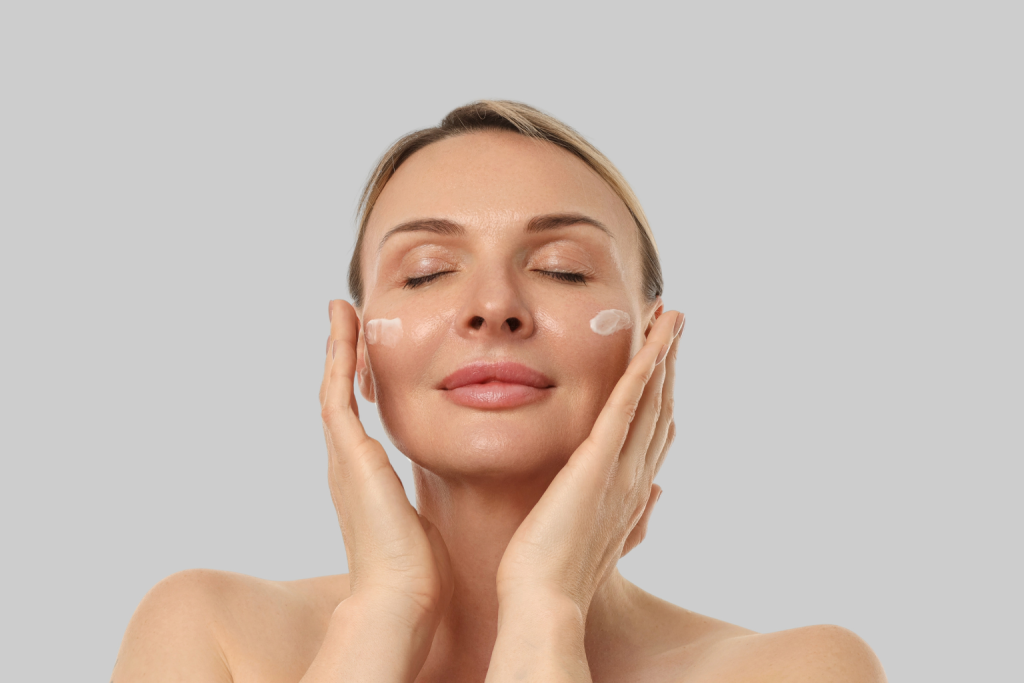
If you’re looking for the best wrinkle cream or wondering how to make your body produce more collagen, consistency with your skincare routine is key. The building blocks of radiant skin go beyond the common actives: enzymes from fruit can play an often-underestimated role by gently resurfacing dull, tired complexions. The science behind fruit enzymes for natural skin renewal and exfoliation uncovers an additional layer to optimizing your regimen, unlocking smoother and more youthful skin appearance when integrated correctly.
AM Skincare Routine
- Gentle Cleanser (avoiding sulfates)
- Vitamin C serum (ascorbic acid, 10%+)
- Moisturizer with hyaluronic acid
- Broad-spectrum sunscreen SPF 30+
PM Skincare Routine
- Gentle Cleanser
- Retinoid or retinol serum (start with 0.3–0.5% for beginners)
- Peptide or ceramide moisturizer
- Optional: lightweight facial oil (rosehip, squalane) for extra nourishment
Age-Specific Adjustments
- 30s: Introduce antioxidants, light acids, and SPF as daily non-negotiables.
- 40s: Add peptides, richer moisturizers, and strengthen retinoid regimen.
- 50s+: Focus on repairing the moisture barrier, intensify hydration, consider professional products with growth factors.
| Product Name | Key Ingredients | User Age Range | Efficacy (Studies %) | Average Cost (USD) | Pros | Cons |
|---|---|---|---|---|---|---|
| Cream A | Retinol, Vitamin C | 30-50+ | 78% saw reduced wrinkles | $40–$85 | Fast-acting | May cause irritation |
| Cream B | Peptides, Hyaluronic Acid | 40+ | 65% saw improved elasticity | $50–$120 | Hydrating | Heavier texture |
| Cream C (Natural) | Plant extracts | 20-60 | 45% noticed brightness | $25–$40 | Gentle | Slower results |
Checklist for Choosing Anti-Wrinkle Skin Care Products
- Contains retinol or peptides
- Fragrance-free (for sensitive skin)
- Dermatologically tested
- Appropriate for your skin type and age group
Always check ingredient concentrations — price doesn’t necessarily mean higher actives or better results per clinical product reviews. As you assess product claims, be mindful of a subtle but impactful distinction in your diet: differences between plant versus animal protein for skin aging can influence both topical and internal strategies for wrinkle prevention.
Lifestyle Adjustments for Youthful Skin

My face looks old and tired what can I do beyond diet and skincare? Lifestyle upgrades can make a profound difference. Sleep, hydration, stress management, and exercise are the pillars of younger-looking skin. The gut-skin axis is also gaining attention, where fermented foods for skin health and gut benefits are implicated in supporting a resilient, radiant skin barrier and healthy microbiome.
Sleep’s Impact on Skin Regeneration
- 7-8 hours of uninterrupted sleep boosts growth hormone and cell turnover.
- Optimize your bedroom: dark, cool (65–68°F), and screen-free for 90 minutes before bed.
Dr. “In our lab studies, we can easily distinguish the skin quality of someone who sleeps five hours a night from someone who sleeps eight hours with 90% accuracy. That is how profound the difference is.”
Hydration Tips
- Drink water steadily through the day and include foods high in water content.
- Balance electrolytes with potassium-rich foods (like bananas and leafy greens).
Managing Stress
- 10 minutes of daily meditation can drop cortisol by 25%.
- Deep breathing, yoga, and nature time (forest bathing) help mitigate collagen-damaging stress hormones.
- Digital detox before bedtime improves sleep quality and skin clarity.
“I’ve had clients whose nasolabial folds and forehead lines softened significantly after they implemented stress management techniques for just three weeks.”
Regular Exercise
- HIIT boosts growth hormone for collagen synthesis by up to 450%.
- Facial yoga for 30 minutes daily over 20 weeks can visually reduce age by 3 years see facial yoga scientific results.
- Strength training retains muscle tone under the skin, preventing sag and hollowing.
- Gentle inversions (like downward dog) increase blood flow to facial tissues.
Optimize workout timing: morning sessions match natural cortisol rhythms, while gentle evening stretches can enhance sleep quality. In addition, some research points to the synergistic role of dietary enzymes from fruit. Curious about accelerating results? Explore how fruit enzymes contribute to ongoing skin renewal and work in tandem with exercise-driven repair.
FAQs About Anti-Aging Treatments
- How soon will I see results from a new skincare routine?
Most people notice improved hydration and glow in 2–4 weeks. For visible wrinkle reduction or firmness, allow 8–12 weeks, especially if starting retinoids or peptide serums per dermatological recommendations.
- What are the risks of anti-aging injectables?
Side effects for fillers and Botox include bruising, temporary asymmetry, and—rarely—vascular complications. Always use a qualified provider see expert guidance here.
- Can you reverse deep wrinkles naturally?
While you can’t fully erase deep wrinkles, consistent use of retinoids, antioxidants, facial exercise, and lifestyle changes can visibly soften them over time according to published clinical data.
- Do collagen supplements really work?
Research shows some modest skin hydration and elasticity improvements from hydrolyzed collagen supplements—but results vary and are not a substitute for diet or topical actives see supplement research conclusions. However, the precise collagen synthesis pathway relies on adequate intake of key amino acids such as proline and glycine—both essential for those wondering how proline and glycine support collagen production in skin.
Case Studies & Success Stories
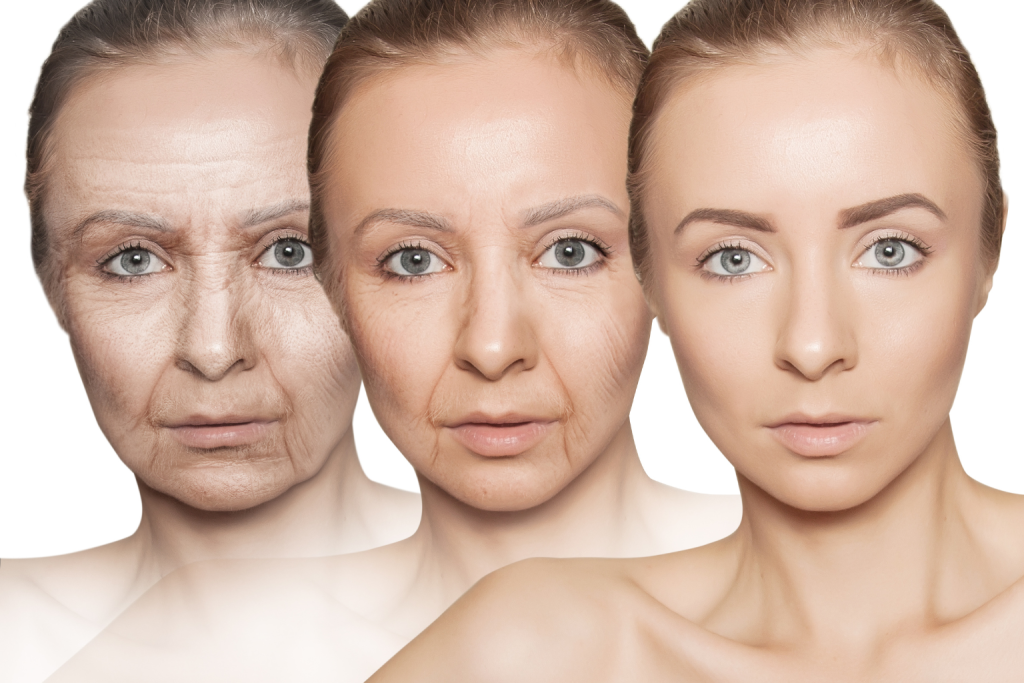
- Meredith, 52: “After cutting down sugar and loading up on anti ageing superfoods and collagen boosting foods for six months, coworkers asked if I had work done. My skin had more firmness and glow than any cream ever gave me.”
Impact: Best results from nutrition shift and hydration, with added skin care. She also introduced more fermented foods into her diet, and experienced not only improved skin tone but enhanced overall gut harmony—a subtle benefit increasingly recognized in the context of fermented foods and their gut-skin relationship.
- Thomas, 58: “I instituted a nightly skincare routine, facial yoga, and 8 hours’ sleep. Colleagues thought I’d had procedures—I hadn’t.”
Impact: Regular facial exercise and smart skin care routine. One technique he found transformative involved the targeted application of fruit-based enzymes for ongoing skin renewal layered with his usual routine.
- Rebecca, 49: “After eight weeks of facial massage, green tea, and dedication to eating anti aging food, I decided to skip the expensive treatments—my skin looked healthier and brighter.”
Impact: Greatest benefit from combining diet, stress management and natural remedies. Her meals incorporated both animal-based and plant-sourced proteins, giving her insight into the different impacts of plant versus animal protein on skin aging and how diverse sources promote elasticity and firmness.
Conclusion: Long-Term Strategies vs Quick Fixes
Let’s not sugarcoat it—no product, injection, or one-time procedure is as effective as daily simple steps. The biggest results come from high-impact lifestyle and nutrition changes—like adding anti ageing fruit and vegetables, upgrading your anti aging skin care routine, and protecting your skin daily with SPF.
- Immediate fixes: Hydration, wrinkle cream, makeup, and aesthetic procedures give fast, short-term results, but fade without a foundation of healthy habits.
- Long-term solutions: Collagen boosting foods, steady sleep and hydration, stress reduction, and proven topicals (retinoids/vitamin C) deliver ongoing visible change and help you maintain youthful, resilient skin. When planning your daily meals or beverages, small choices—such as including skin-brightening warm anti-aging drinks each fall—can compound over time for visible transformation.
Set realistic expectations: It takes weeks to months to see dramatic change, but small daily actions add up. For anyone who wonders “my face looks old and tired what can I do”: consistency, not perfection, is what gets results.
If you’re unsure where to start or hit a plateau, consult with a board-certified dermatologist for personalized treatment—especially when considering the best anti aging treatments or professional options.
References
- Comprehensive review of intrinsic and extrinsic aging in skin – Frontiers in Physiology
- Study: Impact of UV and pollution on facial aging – Nature Scientific Reports
- Environmental and genetic contributions to rapid aging – PubMed Central
- Review: Stress, telomeres, and accelerated skin aging
- British Journal of Dermatology: Anti-aging injectable safety and efficacy
Update Your Routine & Track Results
- Start a personal journal or take monthly progress photos to stay motivated and see your anti-aging journey unfold.
- Join an anti-aging community or sign up for our newsletter for science-backed tips, recipes, and product reviews delivered right to your inbox.
- Share your favorite wrinkle-fighting or mature skin care tips—or any questions—below in the comments. Your voice and story matter!

